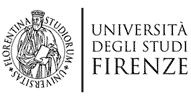Responsive and Vernacular Architecture

MODULE 1 | RESPONSIVE and VERNACULAR ARCHITECTURING | 6 credits
Providing local architectural solutions to global issues requires an understanding of what makes a good environment for occupants and how this may vary across climates, building types and individual preferences. How does architecture contribute to making good environments and can it reclaim its historical role as a tool of sustainable environmental design? This course introduces a generative framework for an adaptive, culturally sensitive, occupant-centred architecture seeking a symbiotic relationship with the city and natural environment.
The Module 1 investigates the principles of bioclimatic and vernacular architecture (eg. enhanced thermal performance of building envelope, solar control, natural ventilation, day-lighting, passive solar heating and cooling etc) to implement the environmental responsive design, focusing on the site analysis and the relation of the architecture with the climatic and cultural context, pointing out the added value of integrating design of passive strategies, solar technologies, renewables and smart materials to implement the buildings energy performance.
Besides, two Units are dedicated to manage the concept design with mass modeling tools (BIM), useful to control the adaptive capacity of the buildings envelope.
Units:
- Principles of bioclimatic architecture /vernacular architecture
- Analysis and relations of the architecture with the context
- Passive & solar architectural design to implement energy performance.
- Smart Materials and Innovative Technologies - dry structures
- Mass Modeling for Conceptual Design (BIM)
- Adaptive and Dynamic envelope
The students will be able to manage an architectural design process, as integrated and highly specialised knowledge, to apply critical awareness of theories and principles in multiple extent of knowledge, focusing on the sustainable approach into the environmental design.
In particular students will be able to combine the relations of the architecture with the context, applying the principles of responsive/bioclimatic/vernacular architecture, fostering the passive strategies and design solutions for Adaptive/ Dynamic envelopes to implement energy performance. They will be able to define a concept building design, through practical experimentation, design workshop and laboratory exercises, operating with Building Integration Modeling methodology (BIM) and Parametric Massing Design tool in order to optimize the dynamic design, green-soft strategies as well as the adaptive architectural solutions and smart materials to enhance thermal performance of building envelope, solar control, natural ventilation, day-lighting, passive solar heating and cooling etc.


